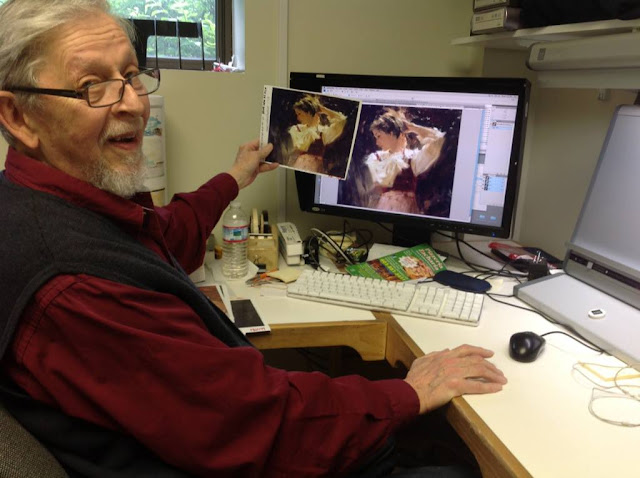![]() |
| Michel Jacobs - My Last Duchess |
Michel Jacobs is not the most familiar figure in 20th century portrait painting, and it is not too surprising. Despite some important commissions, a prominent position in the military as an expert on maps, color, and camouflage, and his role as founder of the Metropolitan Art School of New York, Jacobs was, at best, a good representative of a mediocre period in portraiture. At worst, he was a mediocre example from a bad period. His pedigree, however, was remarkable.
Born in Canada in 1877, Jacobs received art training at several prestigious schools in Europe and North America. His earliest study took place in the United States, at the National Academy in New York. From there, he travelled to Paris, where he trained at the Académie Julian, and at the École des Beaux-Arts in the atelier of Jean-Paul Laurens. And when he returned to the United States, he aimed to share that knowledge with his American students through his own school and through a series of books on color, composition, and portrait painting.
In reading Jacobs' books, it is nice to think of them as a being a bridge between 19th century training and the present; that somehow Jacobs carried the banner of representational art through the miasma of 20th century disdain for the genre. But it is difficult to feel that way after reading some of his work. Jacobs seems to have been searching for answers as much as are the people who can only dream of the training he had. Some of his theories, specifically on color, were peculiar, and some of his discoveries as a teacher seem obvious, and it questionable that some of the methods he claims as his own were not actually part of his training - unless the schools which trained him had already deteriorated a considerable amount by the time he walked their halls.
Michel Jacobs is, nonetheless, deserving of appreciation. Though there are better art instruction books available - many of which were written prior to those by Jacobs - anytime a teacher or student records their lessons, it is valuable to subsequent generations of artists. It is up to the contemporary student to discern which lessons are most valuable.
Below is some of Jacobs' more salient advice.
![]() |
Jacobs advocated a three-color primary system of red, green, and (blue-) violet. His color circle involved additive colors integrated into a subtractive framework.¹
To reproduce his 24 color spectrum, Jacobs recommended the following colors: Cadmium Red, Cadmium Orange, Cadmium Yellow Pale, Emeraude Green, Cobalt Blue, Cobalt Violet, Alizarin Crimson, and Zinc White. |
Before you can become a portrait painter, it is necessary to learn thoroughly the technique used to make a portrait. This technique includes a thorough mastery of drawing, composition, colour mixing, and colour combinations. It is necessary also for a good portrait painter to understand the anatomy of the figure and have a thorough knowledge of the muscles and bones of the face, head, and hands. Important, too, is the study and use of perspective, and the study of textiles and how to paint them.
Portrait painting is both a science and an art. To be a portrait painter, whose name will go down through the ages, it is necessary to study fundamental principles, otherwise, the work will have no value, but will be just a photographic image "to please the family."
A portrait is not merely a photographic likeness of the sitter, but rather an interpretation by the artist of character and soul.
. . . the artist who uses his eye instead of the camera, must . . . be a good judge of character and select the characteristic expressions of the face, whereas, a camera takes only the accidental momentary flash.
A certain amount of memory painting is necessary, especially with children. Very often much of the work done by the artist is executed after the sitter leaves the studio.
. . . under no circumstances paint in the eyes until the head has solidity, form, and likeness. If you paint in the eyes before the portrait is there, you are very apt to ignore the forms which go to make up a solid head.
Work on the head should be almost completed before the eyes are put in.
The old method of using colour of the background to mix with all shadows only gives us a picture in monochrome. If one wishes to paint the colours of nature with all the wonderful effects that it has on our eyes one must study colour.
The portraitist must be, first of all, a good draftsman so that he is not afraid to lose his drawing while painting, and he must be able to see colour and know how to apply what he sees.
To attempt to give the colour of any object in an arbitrary way is impossible. If the painter studies still life and flowers, he will have no trouble in giving to his portraits the "light of life" and he will no longer paint "leather flesh and wooden hair."
It becomes the work of the portraitist to find the real character and to portray the best that is in the sitter. The costume should be appropriate to the character. The background and accessories carefully chosen. All contribute to a beautiful work of art.
The costume and the accessories should not be the focal point of interest. The onlooker must be drawn to the face . . .
In starting the portrait (of a woman), it is very necessary that all cosmetics, rouge, powder, etc., be removed so that the artist can really discern the character of the person, to be able to paint the anatomy and plans of the face. When powder is used, it hides the texture of the skin; lipstick changes the form and planes and expression of the mouth. However, in the last sitting, it is a good idea to allow the lady to put on her "war paint" so that the artist can see how much colouring she likes to have even though artificial.
It is well for the artist to carry on a conversation with the sitter. If he keeps his own youthful enthusiasm, he will portray it in the portrait. Find a subject in which the sitter is most interested and talk on that subject.
To get a really good portrait of a woman, the sitter has as much to do with it as the artist. Above all, keep your sitters' interest and do not tire them. Two hours posing with short rests every half hour is adequate.
To get an interesting portrait, it is essential for you to almost fall in love with the sitter. Rubens always told his pupils that they must fall in love with anyone they painted to get the indescribable something. The portrait not only must be a painting and a work of art: it must be a living thing. John Ruskin wrote, "When love and skill work together, expect a masterpiece."
In painting a man, the modeling and construction of the head is much more definite, more easily seen.
Frans Hals painted his men with a great deal of directness but his women, especially the young ones, with more finish and smoothness.
In a man's head rougher paint is much more interesting and gives the texture of a man's skin.
Children are even more difficult to paint than women, primarily because so few of them really "pose." Here memory painting is very necessary.
We know from our study of anatomy, that a child's head is not in the same proportion as the grown-up's. Take for instance a child of one year old. The body is four heads; at three years, five heads; at ten, six heads; at fifteen, only seven heads. A man's or woman's body ranges from seven to eight heads. Then again, the proportions of the eyes, nose, mouth, and ears are entirely different. The distance between the eyes in a child is much closer than in the grown-up. However, bear in mind that a child's eye, that is the eyeball, never grows after birth.† This is the only part of the whole body that does not change in size. That is why a child's eye always appears bigger in proportion. The muscles and flesh around the eyes change with the years. The ear also changes in size and very often in shape. The nose in a child is very seldom developed and generally is a little stubbed. The length of the nose is very much shorter than in a mature person.
There is a certain roundness of the child's head and when very young could almost be fitted into a square, whereas the adults (sic) would be more oblong.
Do not place too much definite modeling in the head of a child. While the cheeks are almost round like a balloon, if you look closely, you will find that the muscles around the eyes, near the cheeks, show a little modeling.
. . . all shadows should be kept soft so as to give the texture and softness of a baby's skin.
The face of a child is comparatively small in relation to the head. It is about one-quarter of the head, from the place where the eyebrows would be to the chin. The ears are small, generally placed about the middle of the head.
The upper eyelid is formed of three planes depending on the position of iris and the turn of the head. The upper lid above the iris, no matter what position the eye is turned, is more or less flat.
The iris of the eye should not be painted in until the surroundings of the eye are first painted.
My old master Jean-Paul Laurens, at the École des Beaux Arts in Paris, said, "You must paint an ear so that you can pull on it."
But remember that the ear like every other part of the head, must be drawn in perspective; otherwise it will throw the entire head out of drawing.
Hair is a metallic surface whether red like copper, blond like gold, brown like bronze, light brown which is light bronze, black which is dark bronze, or white which is silver. It is well to paint the hair so that the paint flows easily on the brush by using a great deal of medium. The shadows are put in first, then the halftones, then the lights, all while wet. A good way to get the effect of light on hair, especially the highlights, is to paint the strokes across the light instead of the direction of the hair. Then, while still wet, use a large dry brush and drag the paint across. This will give the texture of the hair.
Study anatomy and express it in the neck and shoulders. Be careful, however, not to make the shadows as dark as they appear in life. Remember, the head is the principal part of a portrait.
The muscle that runs from the pit of the neck to the back of the ear, called the sternomastoid muscle, generally shows quite strongly in a woman, no matter how swan-like or soft her neck may be, especially if she turns her head. This muscle should be painted and expressed in a mild form, being careful of the hollow formed by this muscle against the collar bone. It is bounded toward the back by the muscle that has three points of attachment called the trapezius. One point of attachment shows in the front on the upper part of the neck.
The neck is not a straight column or cylinder mounted on the shoulders. It has beautiful curves.
All of these muscles and even the "Adam's apple" should be expressed but not too forcibly. Keep the shadows light, the edges soft, and the light a little darker.
A portrait painter must have a thorough knowledge of the anatomy of the hands. They are difficult to paint. They express different emotions without subterfuge.
With all the details that are necessary to paint the hands, the whole whole construction should be soft and flowing, yet show a certain amount of anatomy. But what is more important, the expression in the hands should denote the character of the sitter.
The arm must "flow" into the hand.
. . . fingers are not round but have four sides.
Many people, in looking at a portrait, judge its artistic value by how well the hands are painted.
The end of the fingers are slightly rosier than the rest of the hand.
In lighting a woman's head, have the light fairly low. In a man's head the high skylight or high side light will cast a shadow in the eye socket, under the nose and under the chin and bring out more forcibly the strong lines of a man's head. In a woman's head it is good to keep these shadows softened and a fairly low light will do this.
At times a large piece of white paper or cloth stretched on a canvas stretcher may be so placed to reflect light into the shadows, making the lighting effect more interesting.
If you desire a firelight effect in the face, place a large highly polished copper tray or brass tray to reflect up into the face. In this case, remember that the shadow side and halftones of the head will be much colder than in painting from the ordinary north light on account of the simultaneous contrast. To get the effect of light in just the colour of firelight, one must keep the rest of the head cold.
Sometimes it is desired to get a starling effect by painting complementaries; that is, the drapery (i.e. the costume and accessories, and all textiles in a portrait) in complementary colours of the background. As a rule it is better to have the whole picture in harmony. It makes a more livable picture.
The background must have atmosphere. There are many ways to arrive at this. One method is to break up the colours into their component parts. For example, take a green background. As green is made with yellow and blue, paint in the approximate colouring of the background green in the shade and value, using a little poppy oil as the medium. Then break into this with a little blue and yellow, working it into the wet paint. White, of course, will be used in mixing the colours and the correct shade of green neutralized as necessary by means of its complementary.
The head must always stand in front of your drapery (i.e. a fabric backdrop). This can be arrived at by not painting the shadows too dark or the lights too light. . .
The brush used (for painting backgrounds) should be very large, as large as your intelligence allows.
Do not have the paint too thick in the background.
You must be able to feel that you could walk around the figure. Therefore, the background should be simpler as it approaches the head.
If chairs, desks, or other furniture are to be portrayed, the shadows should be a little lighter and the lights a little darker than in reality. This will hold the accessories in their proper place, and they will not intrude themselves as the first things seen.
Yellow gold is painted by first painting the dark or shadow side in either neutralized red or neutralized orange. The halftone is painted with a yellow-orange or yellow slightly neutralized, the refracted light in yellow-green or green. The highlight is generally yellow with white added. This gives a sparkle and metallic surface.
. . . great care has to be taken that in the last sitting you do not ruin a good portrait by following al the suggestions and criticisms of the family and friends. There are many people who pose as a judge of art, but who knows nothing about painting. They have built up a reputation among friends as "a great critic," and have spoiled many a good portrait when the artist was foolish enough to listen.
These suggestions give you an idea of how to see, for it is a bad idea to use a formula without using your eyes.
† The human eye actually does grow after birth, though most of the growth is along the "axial length" (front to back). In relation to other parts of the body, the eye appears to grow very little over the years of a person's physical development.
¹
Colorsystem: Michel Jacobs, retrieved May 23, 2013 from [www.colorsystem.com/?page_id=868&lang=en]
.
Bibliography
Jacobs, Michel,
Colour in Portrait Painting, (D.M. Campana Art Co., Inc., Chicago, 1957).


































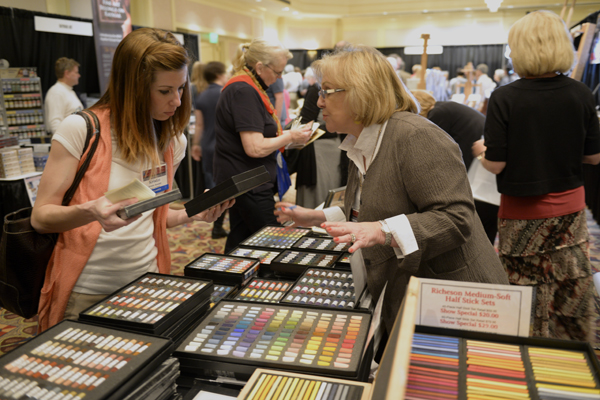


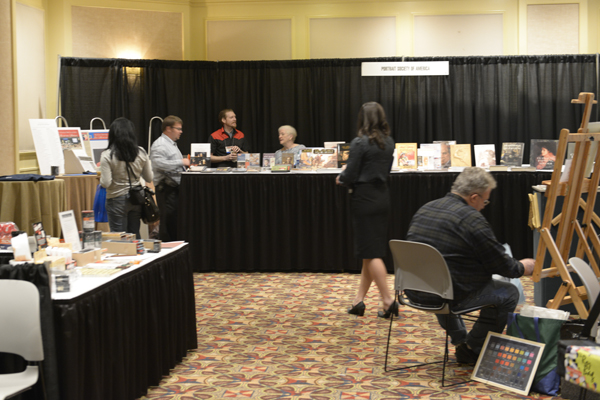

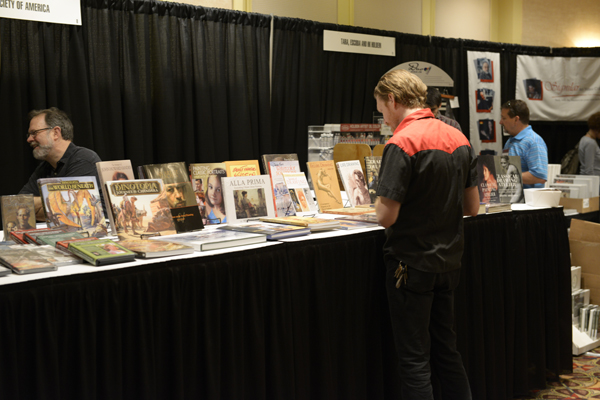

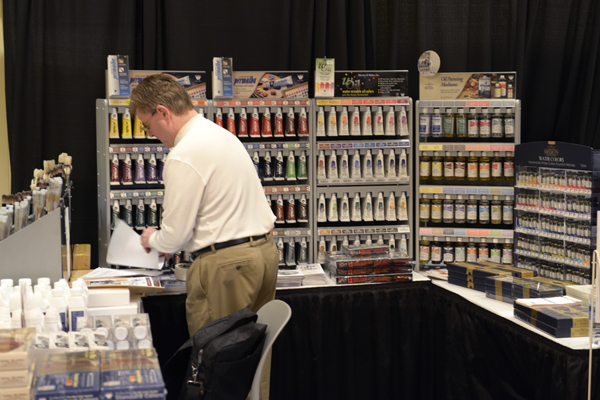




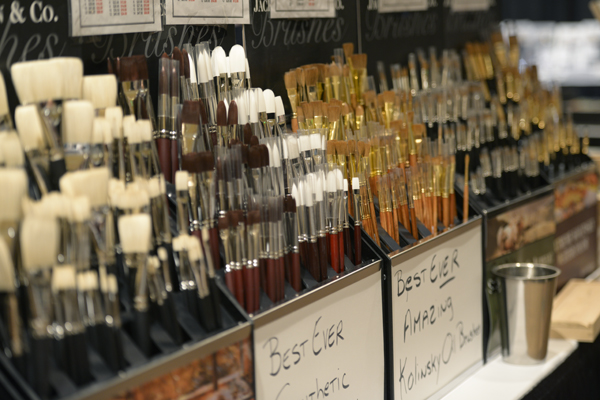

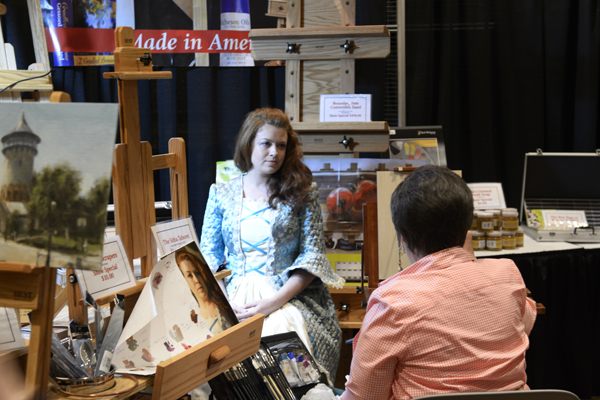

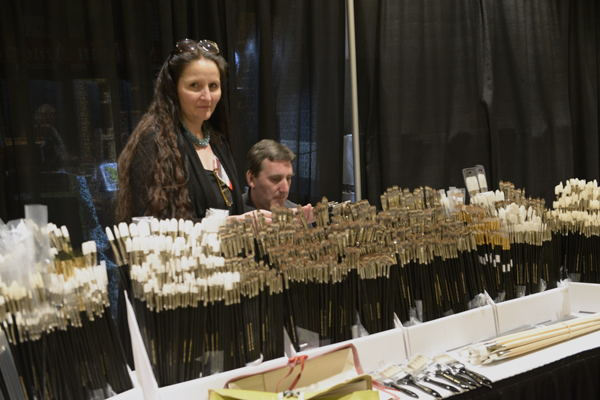



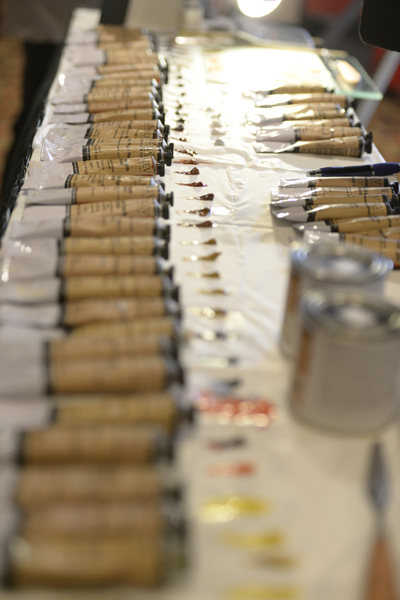








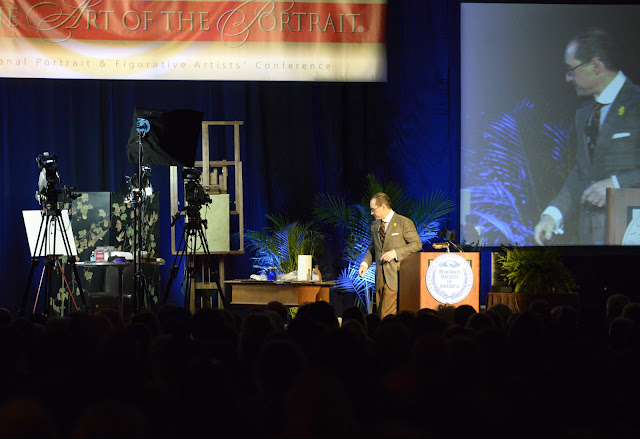










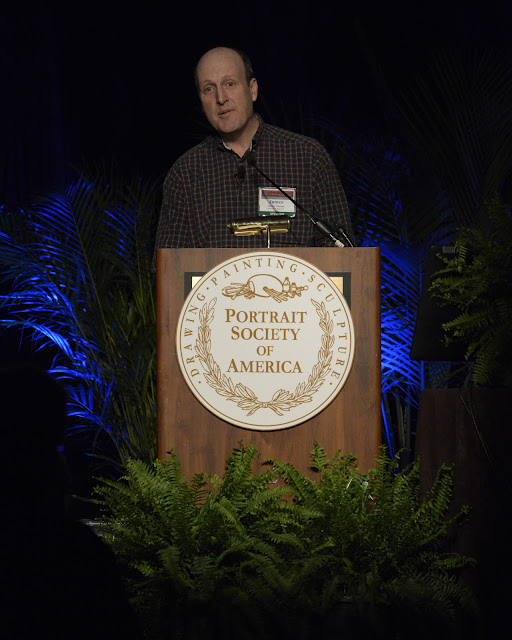
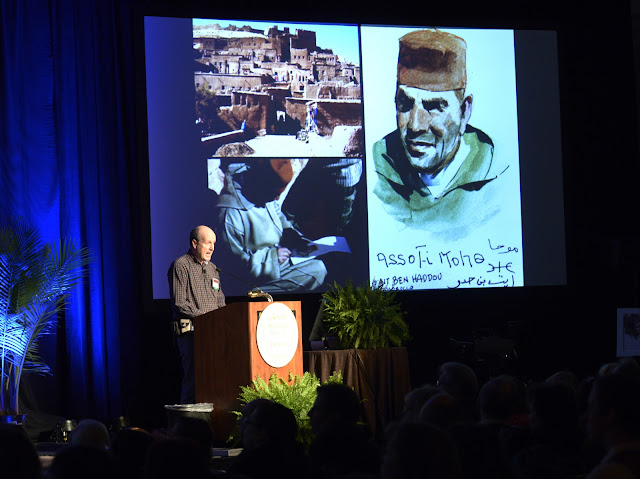

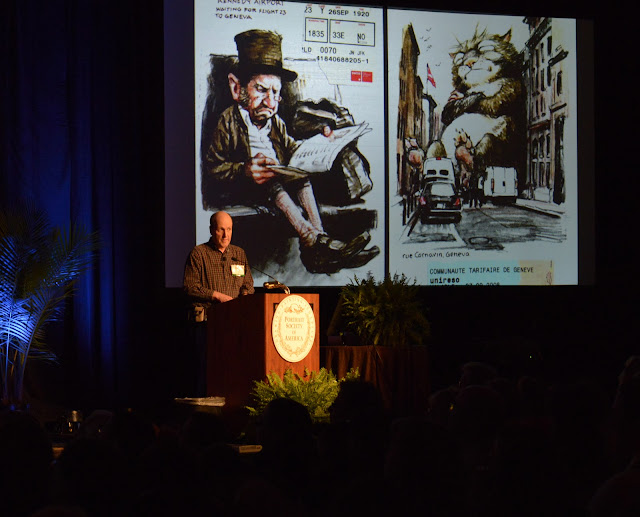














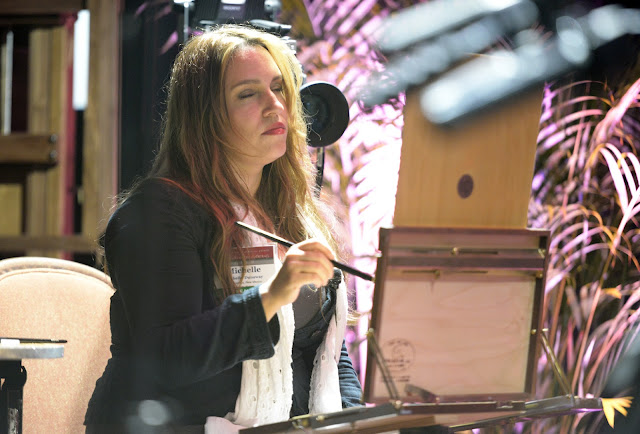


















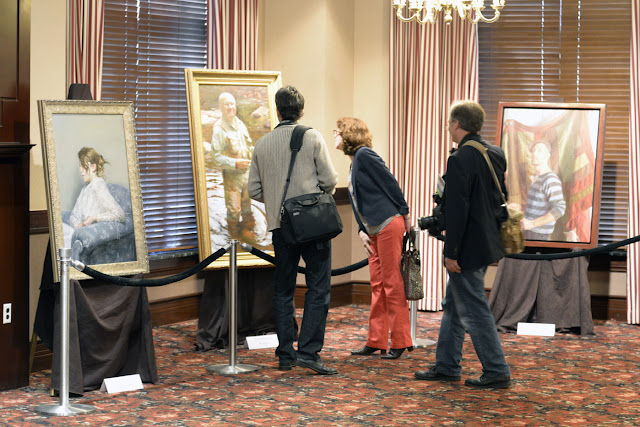

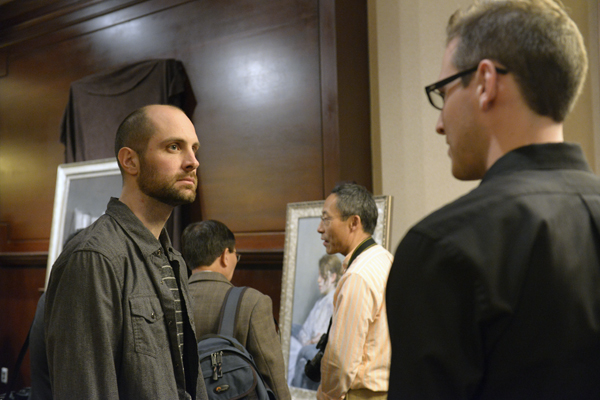

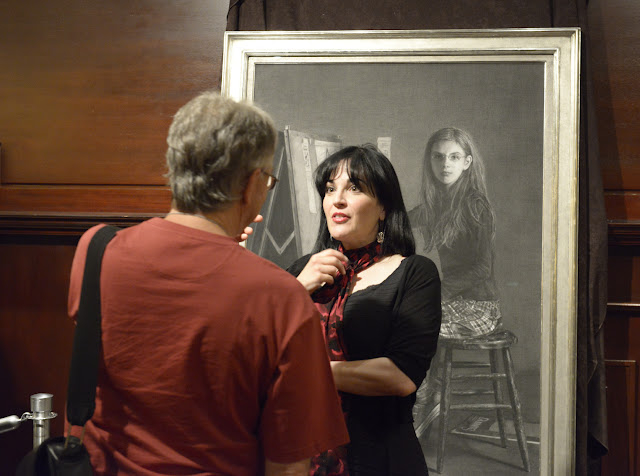








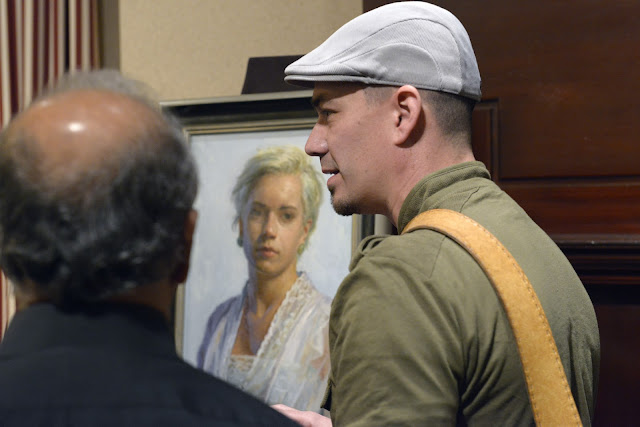












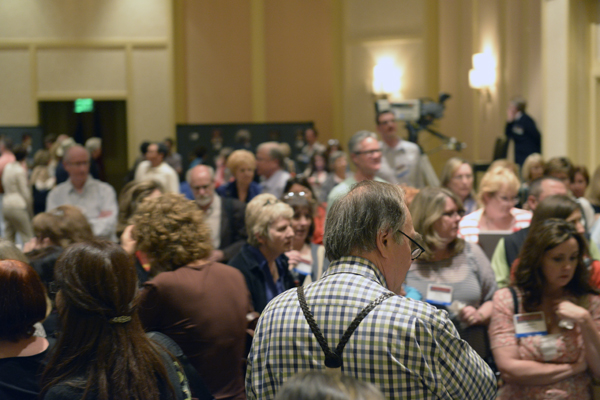

















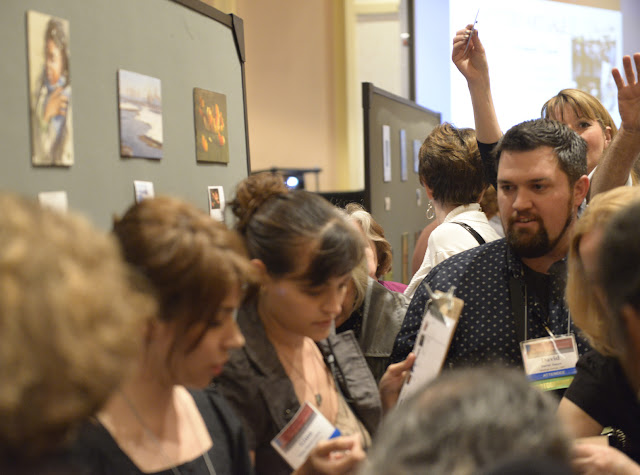


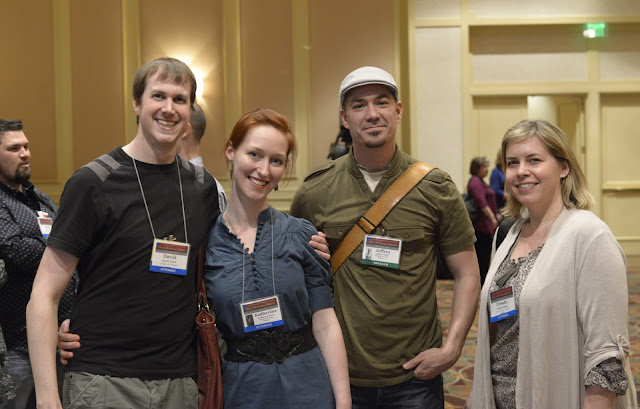
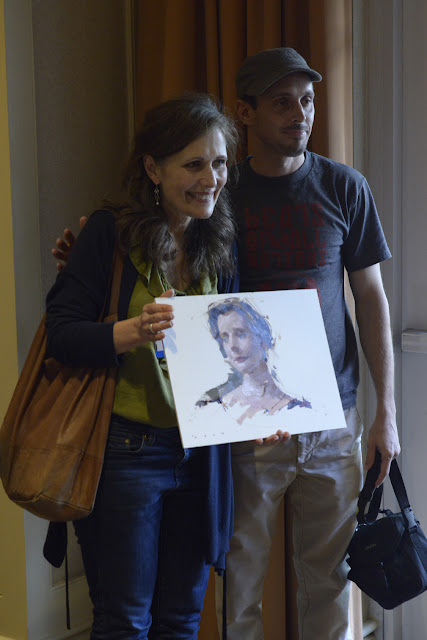












































.jpg)





































































































































 ; his positivity left the audience feeling encouraged to step out, and not to be afraid to leave themselves on their canvases.
; his positivity left the audience feeling encouraged to step out, and not to be afraid to leave themselves on their canvases.


























